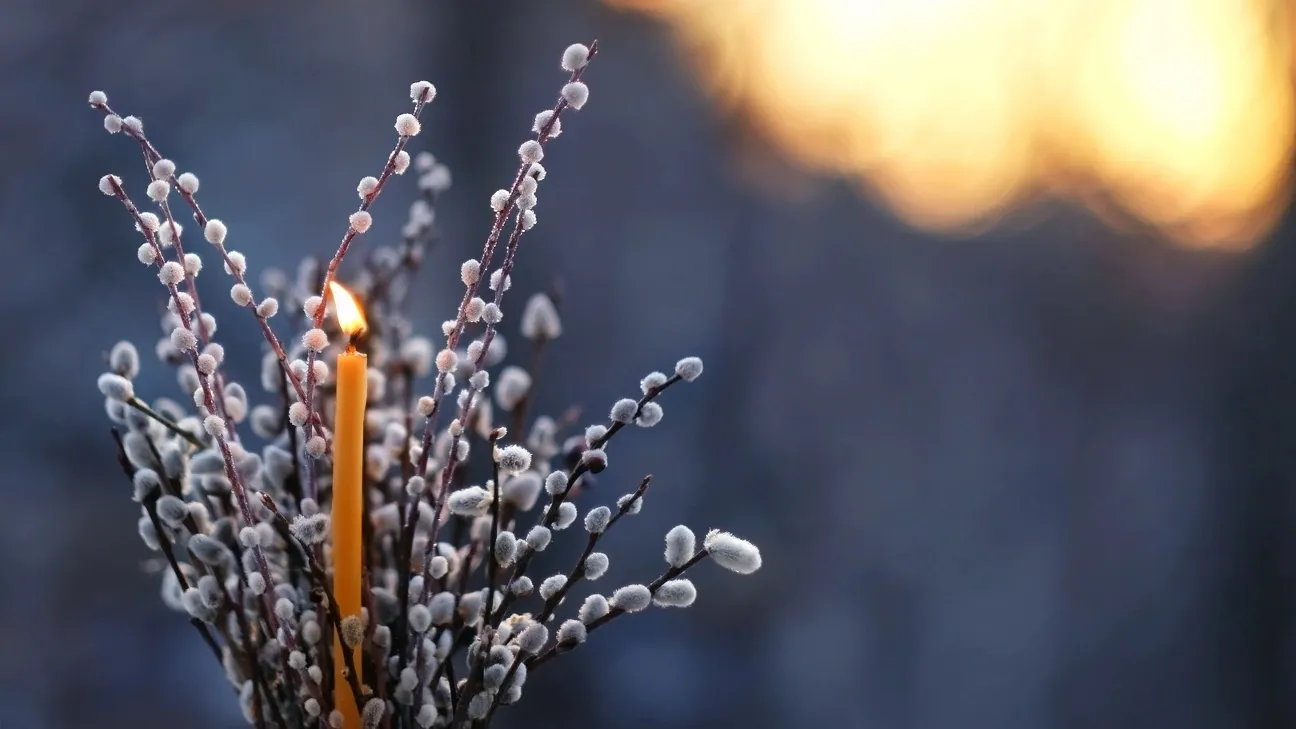27 April 2024, 09:12
Palm Sunday is one of the most revered holidays both in Ancient Rus’ and in modern Russia. Photo: ju_see/Shutterstock/Fotodom
Palm Sunday is one of the key Christian holidays, celebrated a week before Easter. In church tradition, this is the Entry of the Lord into Jerusalem. Yamal-Media will tell you about the history and traditions of the ancient holiday.
When is Palm Sunday in 2024
In 2024, Orthodox Christians celebrate Easter on May 5 – this is a moving date, the first Sunday after the spring full moon, which occurs no earlier than the vernal equinox. The Entry of the Lord into Jerusalem, or in the Russian tradition Palm Sunday, is celebrated a week before Easter. In 2024, the holiday falls on April 28.
History and essence of Palm Sunday
To understand the meaning of Palm Sunday and why it is celebrated, let us remember: the event occurred during the period of the Roman occupation of the Kingdom of Judea. The Jewish people were waiting for the coming of the Messiah, who would lead them to liberation and the re-establishment of an independent state.
When Jesus learned that his friend Lazarus had been in the grave for four days, he came to Bethany, where Lazarus’ sisters, Martha and Mary, lived. There he resurrected Lazarus, proving his divine origin in front of many witnesses.
After this, Jesus and his disciples headed to Jerusalem, where they were met by crowds of people with palm branches – symbols of triumph. Welcoming the Messiah, the people enthusiastically shouted “Hosanna to the Son of David!” And the first thing Christ did was expel the merchants from the Temple, the symbol of the Kingdom of Israel.
Giovanni Panini, Expulsion of the Traders from the Temple. 1750 Source: wikipedia.org
Many people followed Jesus, he showed them many miracles, and therefore the high priests decided to kill him. Therefore, the Entry of the Lord into Jerusalem is usually considered as a harbinger of the suffering, death and Resurrection of Christ, as well as Easter. The main idea is that true faith is impossible if you focus on achieving worldly goods and building an earthly kingdom.
Willow (willow) branches, replacing palm branches in Russia, also symbolize the onset of spring and new life, which makes this holiday especially significant for Orthodox Christians.
Palm Sunday in Rus’ and in Russia
In Rus’, the Entry of the Lord into Jerusalem has always been widely celebrated. In Moscow, the ceremony of “march on a donkey” was held. The Patriarch addressed the king with a special invitational speech, sitting in full vestments on a horse, symbolizing the donkey on which the Savior rode into Jerusalem. Then a religious procession began through the Kremlin.
Vyacheslav Schwartz “Palm Sunday in Moscow under Tsar Alexei Mikhailovich. Procession of the Patriarch on a Donkey.” 1865 Source: wikipedia.org
The patriarch’s horse was led by the bridle by the sovereign himself. The ceremony was carried out even in 1611, when the Kremlin was under the control of Polish troops. However, in 1697, Peter I abolished the ancient tradition.
Nowadays, the celebration of Palm Sunday begins with an all-night vigil. From the evening of Lazarus Saturday, believers meet the invisibly approaching Savior and greet Him with willow branches and candles in their hands.
At matins, during the second part of the vigil, a special prayer is read for the blessing of “vai” (translated from Greek as “palm branches”). After this, the willow is sprinkled with holy water. Believers use these branches to decorate icons at home or place them next to them. After a year, the old branches are removed, but not thrown away, but sent down the river or buried.
Palm Sunday traditions
Since ancient times, willow has been credited with magical properties that promote fertility, cleanse from negativity and protect against disease. Branches for consecration in the church were cut only from young and healthy trees, avoiding those growing near cemeteries.
Since ancient times, willow (willow) has been considered a magical tree. Photo: Tanya Dol/Shutterstock/Fotodom
It was believed that if willow branches were stuck into the ground at the beginning of the field work season, the harvest would be abundant. At the wedding, the newlyweds were sprinkled with buds and a twig was placed under their feather bed so that their future children would be healthy. And women suffering from infertility wore amulets with willow.
For the holiday itself, bread was baked in the shape of a willow twig. Another custom for good luck is to eat “porridge,” as the buds with blossoming flowers were called. To remove the evil eye and damage, children and family members were lightly patted with branches (lightly because they usually wove rods from willow). The willow brought from the all-night vigil was placed next to the patient so that its healing power would help defeat the disease.
What do we have to do
The Entry of the Lord into Jerusalem is a “quiet”, restrained holiday. Before the start of Holy Week, meekness and piety are required, as befits before Easter, the greatest Christian holiday.
For Palm Sunday you need:
- visit the church, attend the liturgy and consecrate the willow;
- congratulate each other at the festive table;
- help others;
- be brave and generous.
Consecration of the willow tree at the temple. Photo: Alexey Pavlishak/Shutterstock/Fotodom
If it is not possible to consecrate the willow in the temple, you can sprinkle the branches with holy water at home with a prayer for the “sanctification of every thing.”
On the occasion of the holiday, it is allowed to eat fish, but then the strictest week of Lent begins.
What is prohibited to do
Palm Sunday is considered a day dedicated to God, so it is not customary to engage in worldly affairs. Prohibited:
- throw the blessed willow into the trash;
- be jealous, use foul language, or quarrel with other people;
- do hard work;
- comb hair;
- cook hot;
- arrange noisy feasts;
- eat a lot and drink alcohol.
It is not customary to go to the cemetery on Palm Sunday. However, if you need to visit the graves, you need to take willow branches with you. But it is not recommended to restore order, so as not to disturb the peace of the deceased.
Folk signs for April 28
Fishermen especially believed in omens for Palm Sunday. “If the day is dry and clear, then the bite will be good,” they believed. And the peasants believed that if you feed the forest birds on Palm Sunday, it will bring wealth. But most of all the signs were associated with the future harvest: the field work season was just beginning.
A flowering willow in Rus’ symbolized fertility. Photo: Peter Milto/Shutterstock/Fotodom
- Good weather means a rich harvest.
- Windy day – cool summer.
- A sudden frost means an abundance of wheat harvest.
- The more buds on the trees, the more fruits, vegetables and grains there will be in the fall.
- Frost or fog – for a fruitful summer.
- All the snow has melted – May will be warm and sunny.
- If leaves appear on the birch earlier than on the alder, the summer will be dry; if it’s the other way around, it’s rainy.
- Birds are screaming – summer will be dry.
Earlier, the Russians told what they would do during the May holidays.
The most important and current news is in our telegram channel “Yamal-Media”.


